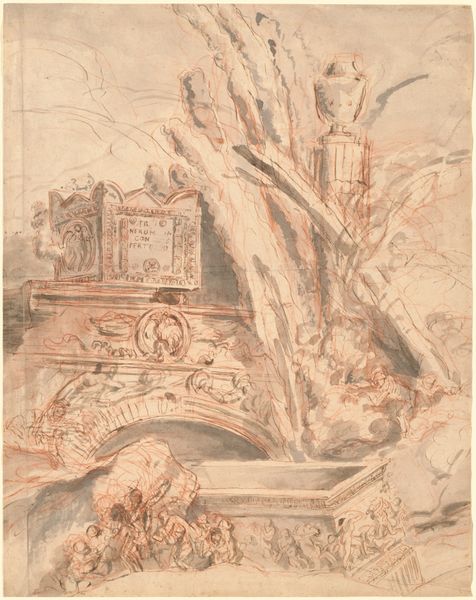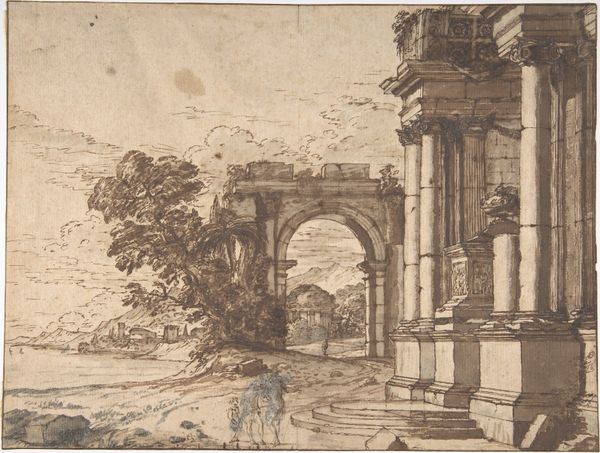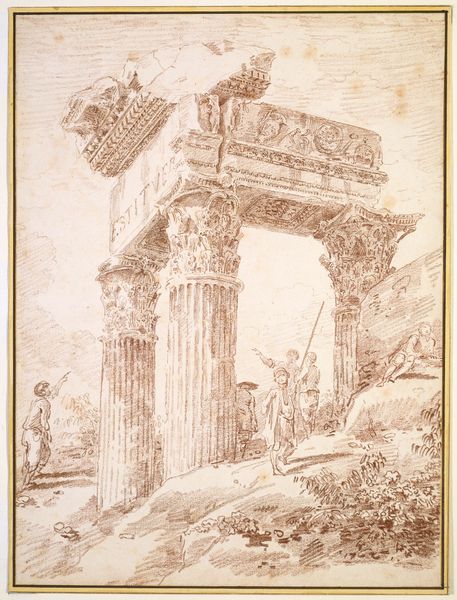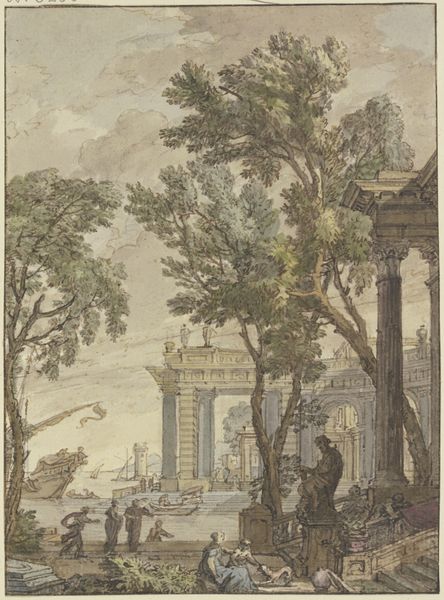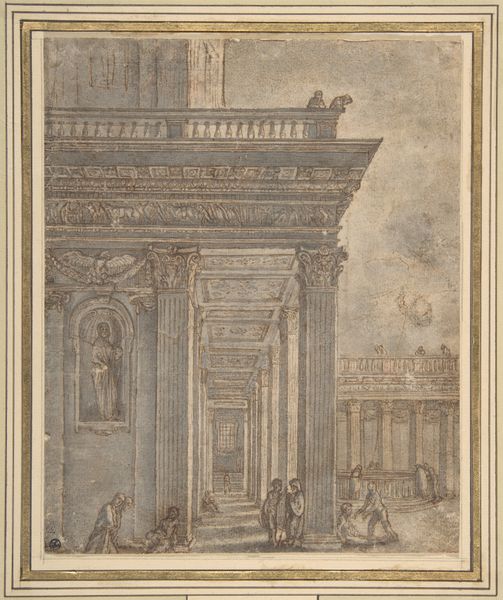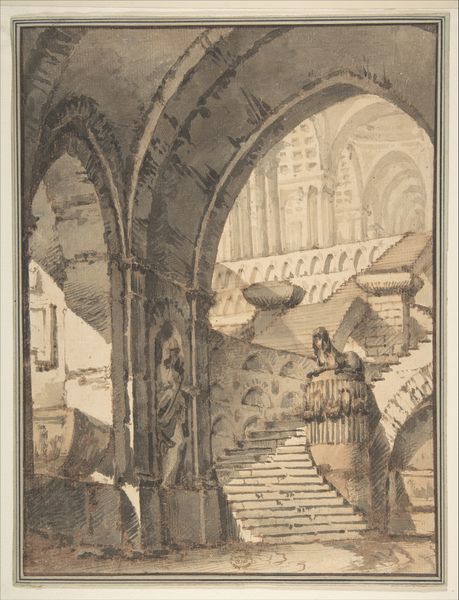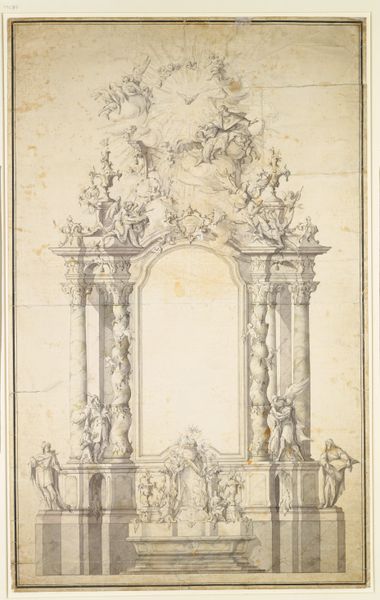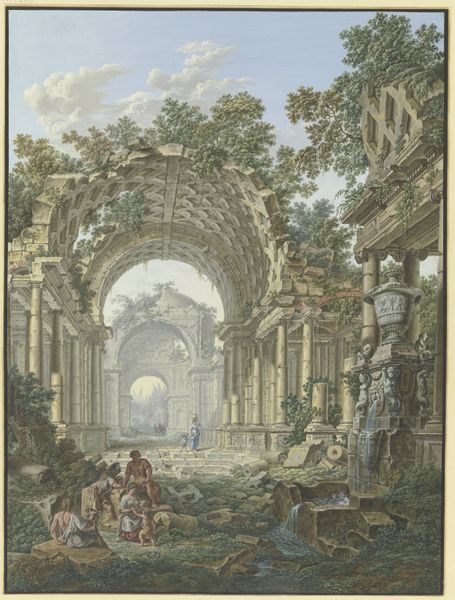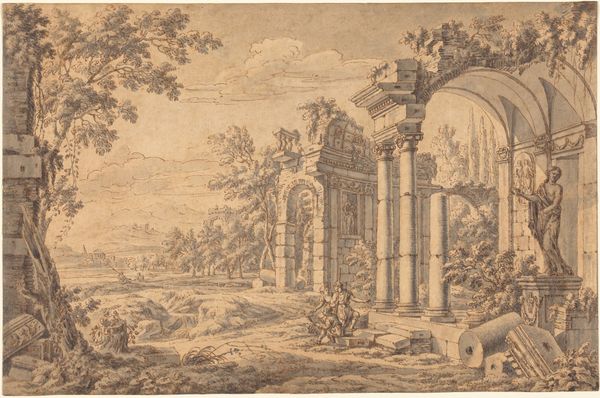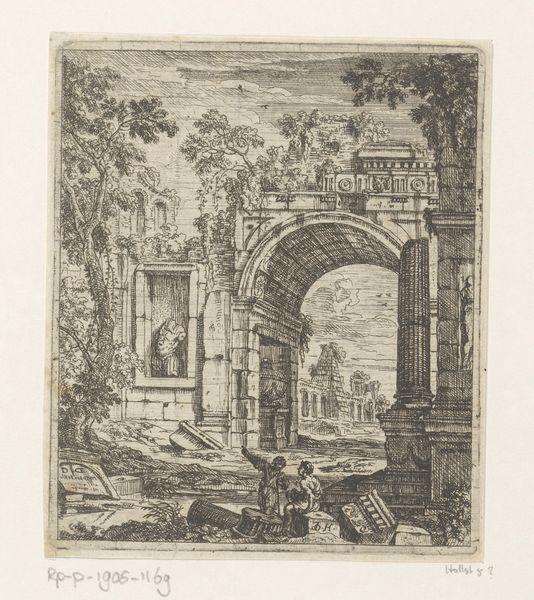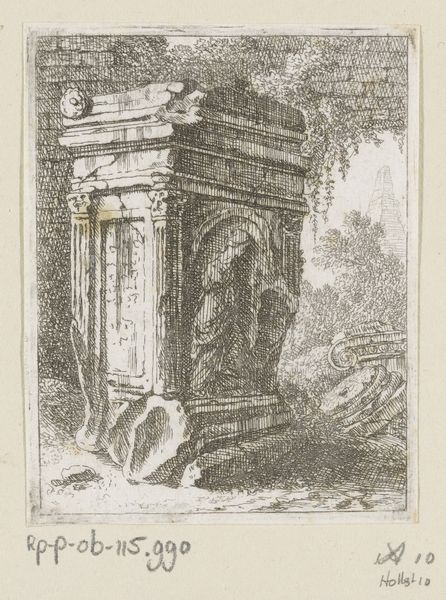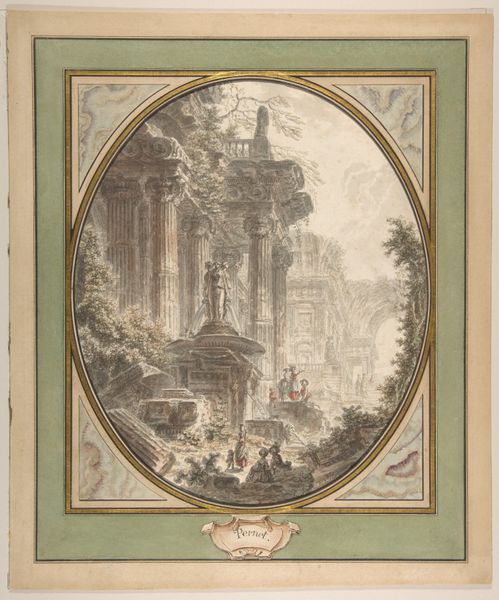
drawing, coloured-pencil, painting, ink, pencil, architecture
#
drawing
#
coloured-pencil
#
painting
#
landscape
#
ink
#
classicism
#
pencil
#
architecture
Copyright: Public Domain
Curator: This is Hubert Robert's "Roman Triumphal Arch," a drawing combining ink, pencil, and colored pencil, housed here at the Städel Museum. What's your initial impression? Editor: An overwhelming sense of melancholy. The muted blues and grays give it an ethereal, almost dreamlike quality, despite the architectural subject matter. The ruined arch itself seems to be dissolving back into the landscape. Curator: Yes, Robert excelled at capturing that sense of sublime decay. But consider the arch itself – a potent symbol of Roman imperial power. He doesn't present it in pristine glory, but as a crumbling vestige. Editor: Precisely. The crumbling edifice speaks volumes. Triumphal arches traditionally symbolized victory, conquest, the enduring power of the empire. Here, though, its fragmentation points to the transience of even the greatest achievements. Curator: Observe how the artist has deliberately juxtaposed the decaying architecture with figures in contemporary dress at the base. Their presence, seemingly indifferent to the ruins, throws the grandeur of the past into sharp relief. Semiotically, it functions as a pointed commentary. Editor: It's not just commentary, it's memory made visible. Those figures inhabit the same space, yet they exist in a different temporal frame, almost disconnected from the potent symbolism literally beneath their feet. Their obliviousness is perhaps the greatest symbol of all – the slow erosion of cultural memory. Curator: True, though Robert might have intended something less overt. The compositional balance between the mass of the arch and the open sky contributes significantly to the image’s dynamism, independent of any symbolic narrative. The deliberate asymmetry directs the eye through a very calculated spatial construct. Editor: Perhaps. But those carefully placed figures, and the very clear iconographic markers inherent to a triumphal arch, point towards a reflection on legacy and ruin. It speaks of the arc of empires, and their eventual fade into the collective unconscious. Curator: I can't deny the power of that interpretation. It’s a persuasive testament to the enduring dialogue between form and cultural meaning. Editor: Exactly. And it demonstrates how visual art acts as a vessel, transporting complex emotional and cultural meaning across time.
Comments
No comments
Be the first to comment and join the conversation on the ultimate creative platform.

